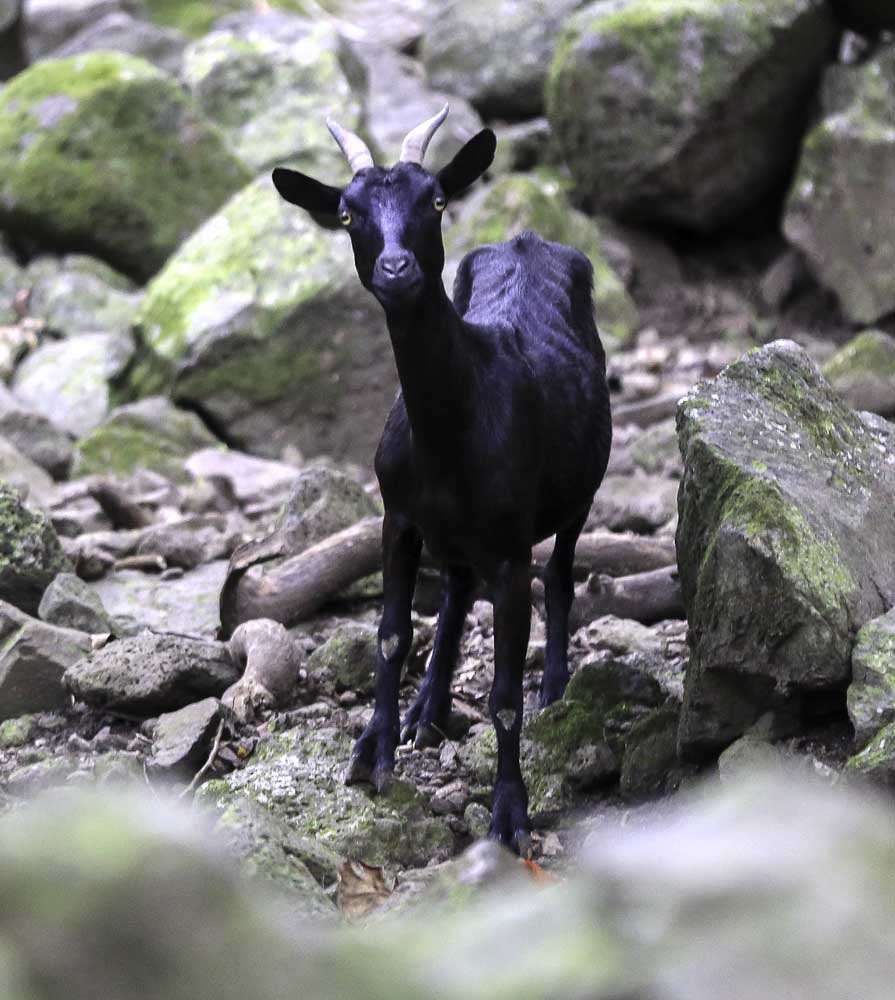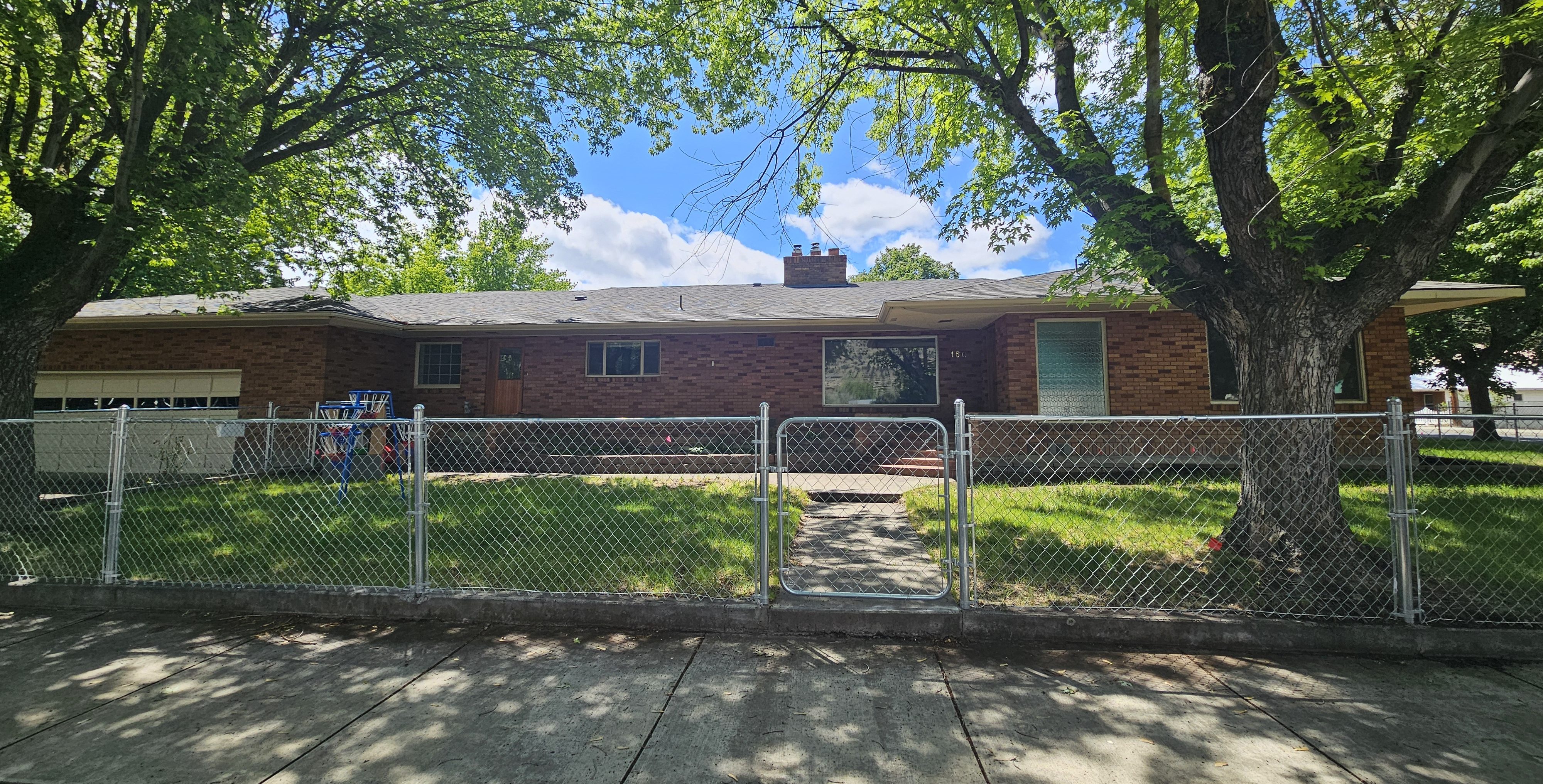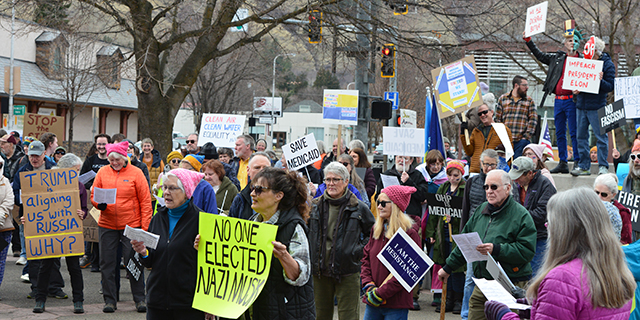Beautiful prison
Published 4:30 am Friday, March 10, 2017

- A wild goat roams near Kalaupapa, an isolated peninsula on Hawaii's island of Molokai where at least 8,000 lepers were banished starting in the 1860s.
Tour guide Rick Schonely summed up the story of Molokai’s leprosy colony in one succinct sentence.
“What started as a nightmare in 1866 has a happy ending.”
1866 was the year 12 leprosy patients arrived at Kalaupapa. They were the first of more than 8,000 people forcibly removed from their families and exiled to this isolated peninsula on the windward side of Hawaii’s island of Molokai. They came by sea and lived out their lives in isolation, trapped by a topography of battering surf and towering seawalls.
Schonely, the son of Portland Trail Blazers broadcasting legend Bill Schonely, told the story as he drove a rusted yellow school bus around the tiny settlement, keeping up a high-energy commentary about the colony’s past and present. Though the state lifted the quarantine in 1969 after a cure became available, he said, many residents stayed by choice. Nine remain. The state of Hawaii has promised to provide room, board and health care until they die.
My husband, Bill, and I relaxed in the jostling bus and listened to Schonely with curiosity. We had hiked roughly three miles into the colony earlier that morning down a rugged pathway that descended almost 1,700 feet. The route includes 26 switchbacks and about 1,800 steps made of cinder block and rock. Only 100 people may visit the community daily after walking or riding a mule or flying in by air taxi, securing reservations through one of two Kalaupapa tour companies.
At the top of the trail that morning, we came across a sign forbidding anyone to proceed without permission and warning of no medical services. On the way down, we occasionally dared to pull our eyes from the rocky, muddy trail to observe feral goats, cardinals and other creatures amid thick foliage.
At the bottom, we joined a group of people sitting on bleachers awaiting two tour guides. Everyone in our group of 11 had booked through a company called Damien Tours. The owner, Gloria Marks, came to Kalaupapa with leprosy, or Hansen’s disease as most at the colony prefer to call the affliction. Marks arrived at Kalaupapa at age 21 and is known as Auntie Gloria. We headed to the Kalaupapa bar where she sat behind a table and checked off our names. She took our $60 apiece and smiled up at us, scars visible on her beautiful face. The bacterial disease causes disfiguring skin lesions, nerve damage and muscle weakness.
After the group clambered back aboard the bus, Schonely slowly cruised the streets. The colony, now a National Historic Park managed by the National Park Service and the State of Hawaii Department of Health, is Mayberry-esque, featuring a library, movie house, post office, YMCA, bookstore, clinic, athletic field, churches and even a horseracing track. Some facilities are no longer in operation now that the patient population has dwindled. The jail, for example, provides storage instead of housing for wrongdoers.
The bus passed a long skinny graveyard bordering the little community. The graves, along with others peppering the area, remind one of how many died here. Even so, only about 1,300 of those who died have marked gravestones. Thousands more are buried in a large field.
When Schonely arrived in Kalaupapa about three decades ago, about 200 of the patients were still alive. He said he gleaned many life lessons from these people, who live fully despite their circumstances.
“I have learned much from them,” Schonely said. “They teach us to live aloha every day.”
Schonely stopped the bus regularly so we could troop off and wander through churches, graveyards, a convent and a bookstore. In the bookstore doorway stood Clarence Kahilihiwa, known in Kalaupapa as Uncle Boogie. Uncle Boogie, who runs the bookstore, flashed a wide smile and offered a strong handshake. At 76, he is a youngster among the patients. He bantered with his visitors in Hawaiian English. He was difficult for most to understand, but his joie de vivre was unmistakable.
Another stop was St. Francis Catholic Church where we gazed at portraits of two Kalaupapa heroes: Father Damien and Sister Marianne Cope. The pair is a dynamic duo in the colony – both were eventually declared saints by Pope Benedict XVI.
Father Damien, a Roman Catholic priest from Belgium, spent 16 years caring for the lepers. He eventually contracted leprosy himself and died at age 49. Schonely called him “champion of the lepers.”
At our next stop, the Kalaupapa convent and the Bishop Home for girls, Sister Alisha Damien Lau talked about Sister Marianne. Lau, a nurse who divides her time between Oahu and Molokai, said the German-born sister and her cohort of nuns dispensed plenty of love as they cared for the disfigured girls of Kalaupapa.
“She did not fear the disease,” Lau said. “She was prudent about infection control, but she hugged the girls. She dressed their dressings. By faith, she believed none of the sisters would get the disease and none of them did.”
The nuns taught the girls confidence and schooled them in making lace, singing and dancing.
“The sisters made this a cheerful place,” Lau said.
Back on the bus, Schonely drove past “the world headquarters of Damien Tours,” otherwise known as Auntie Gloria’s house.
“She’s probably taking a nap in there right now,” Schonely quipped.
His obvious affection is contagious. He said “the queen of Kalaupapa” serves as president of the local Lion’s Club and has a thing for fancy cars. A yellow 1968 Mustang sits under a tarp in Aunt Gloria’s garage. Her husband Richard, who died in 2008, once tooled around town in a Model T when he wasn’t driving the tour bus.
The presence of former residents lingers, Schonely said. He finds hope and awe in the way the patients found joy in their dire circumstances. They fell in love and married. They danced. They fished. Despite not being able to travel or raise children, they found joy.
“This was a happy place,” he said.
During the lunch stop, Schonely pulled out his ukulele and sang a song written by a leprosy patient. The lyrics spoke of the man’s beautiful home — Kalaupapa.
One of the most recent patients to die was Uncle Pali a year ago. Next to the volleyball net sits his dilapidated Volkswagen. In the doorway of the van, he once stood and refereed volleyball games.
In his later years, Schonely said, “he blew his whistle at random. No one’s had the heart to remove the van.”
The National Park Service, which maintains the settlement, considers the opinions of the remaining patients at every turn. The Kalaupapa advisory commission created by the Hawaii Legislature includes seven seats reserved for patients.
“Our mission at Kalaupapa is to provide a well-maintained settlement for the remaining patients as long as they choose to live here,” said Erika Stein Espaniola, NPS superintendent at Kalaupapa.
The fate of Kalaupapa, once the last patient dies, is yet to be decided. The National Park Service is considering four options for the future ranging from doing nothing to unrestricted access. The decision will likely fall somewhere in between, Espaniola said. The public and the remaining patients, who don’t want their story to die with them, are weighing in.
“What we’ve heard loud and clear from patients and the public is that they want to see Kalaupapa retain its essence,” she said. “They want to preserve Kalaupapa and interpret for education and inspiration for present and future generations.”
Our tour came to an end with the squeak of the bus brakes. Schonely hugged us exuberantly after the tour and we hiked back up the trail.
I will remember this day for a long time, I thought as I sucked wind, and not just because of my aching calf muscles. The patients of Kalaupapa had lodged in my heart as proof that humans in the most dire of straits can overcome with grace and joy.





